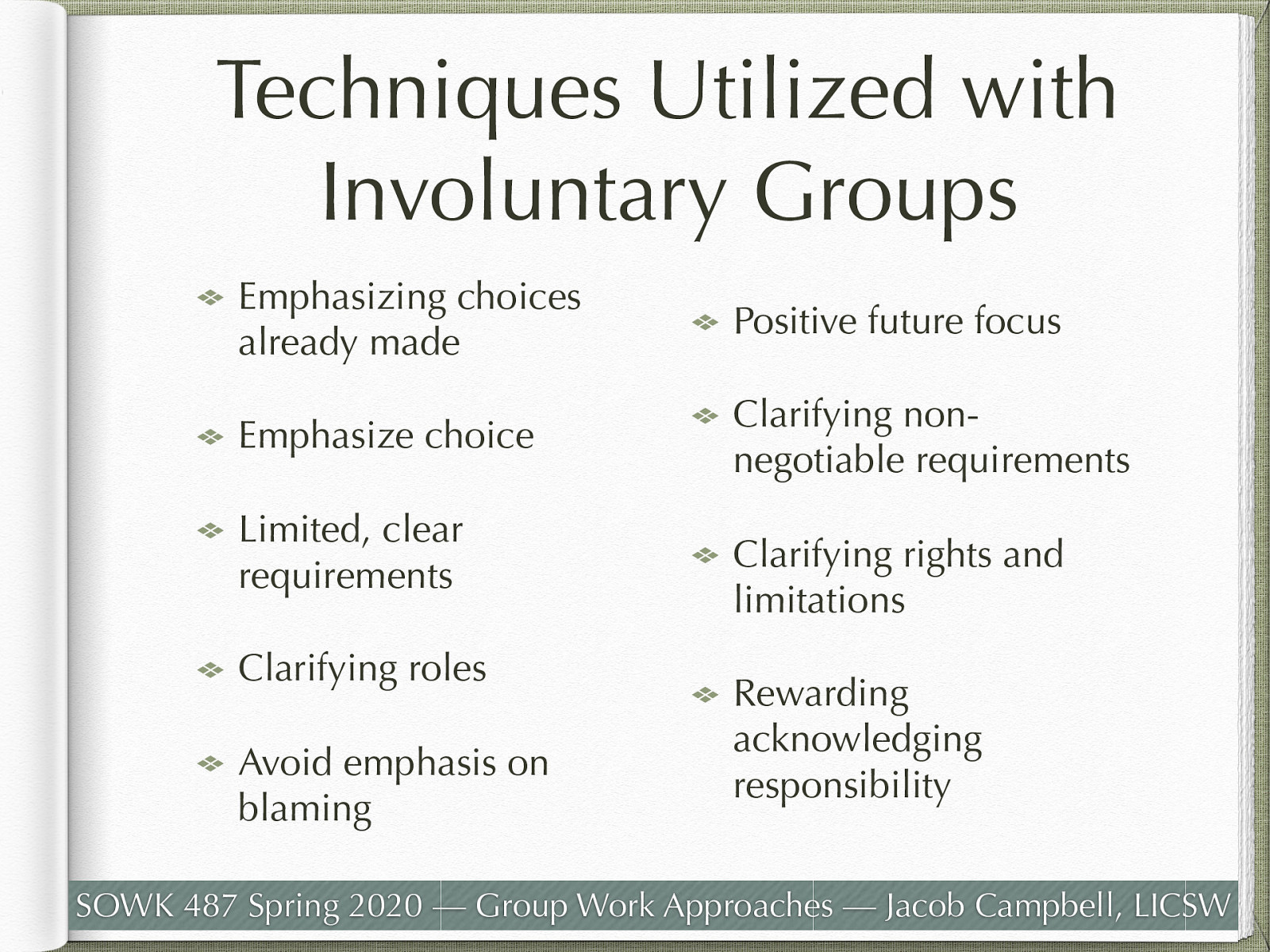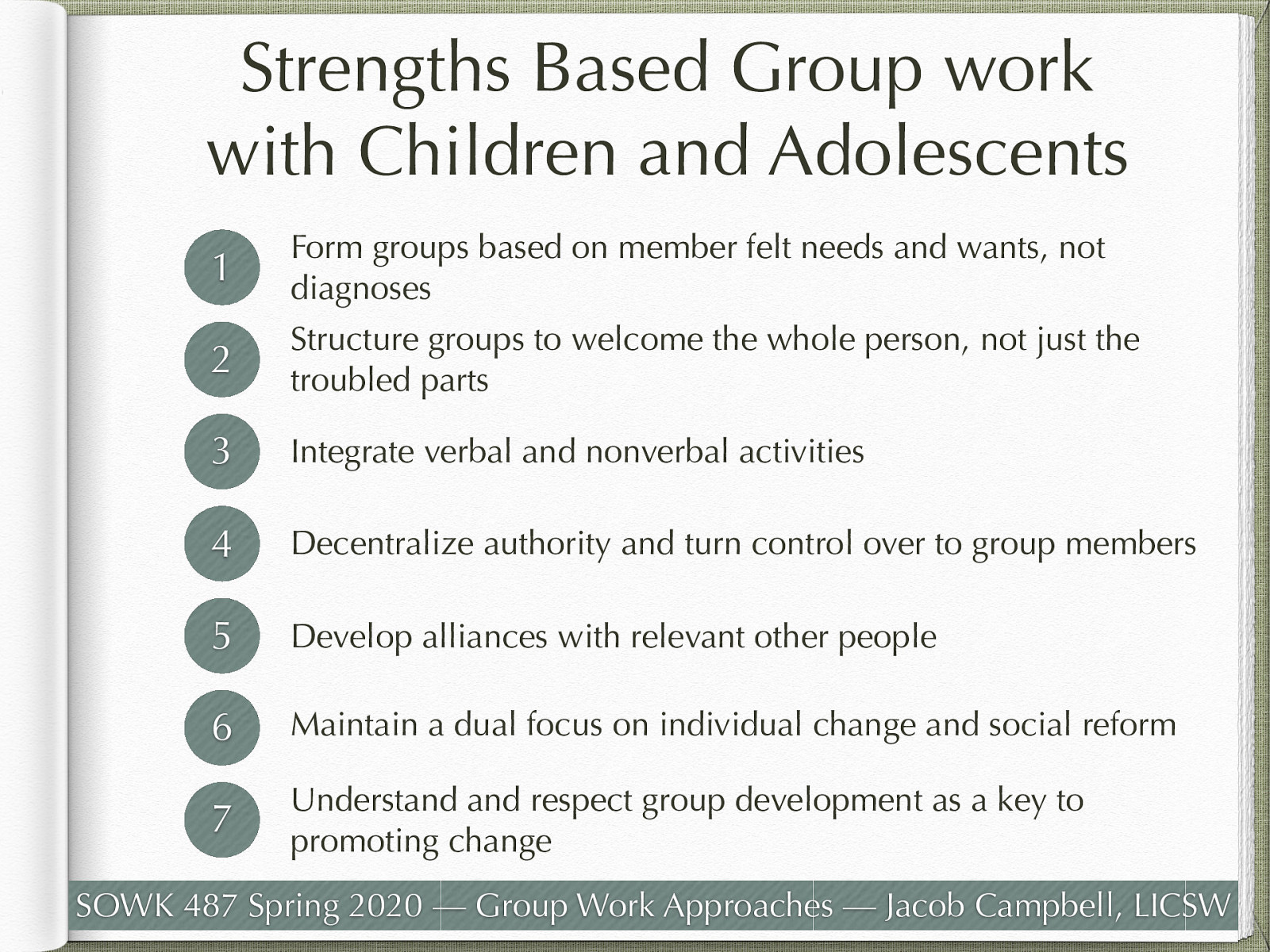Spring 2020 SOWK 487 Week 07 - Group Work Approaches Related to Setting I
A presentation at Heritage University in February 2020 by Jacob Campbell and is tagged with Heritage University, BASW Program, SOWK 487w
Description
The session this week is the first of a three part series looking at group work related to particular settings. This week the settings include:
- Groups in physical and mental health
- Involuntary groups
- Strengths-based group work with adolescents
We also have to practical activities related to groups that you will get to participate in.


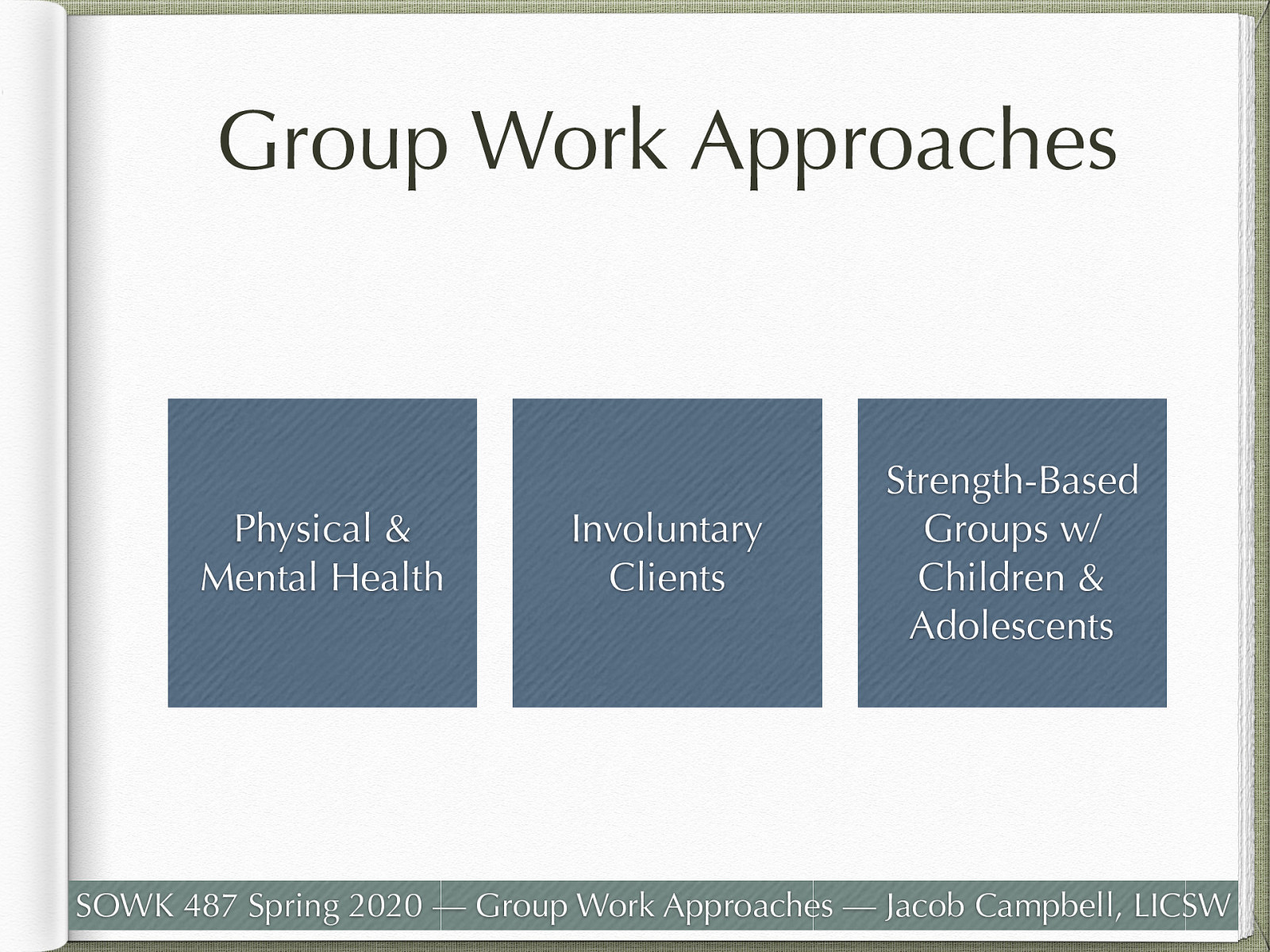

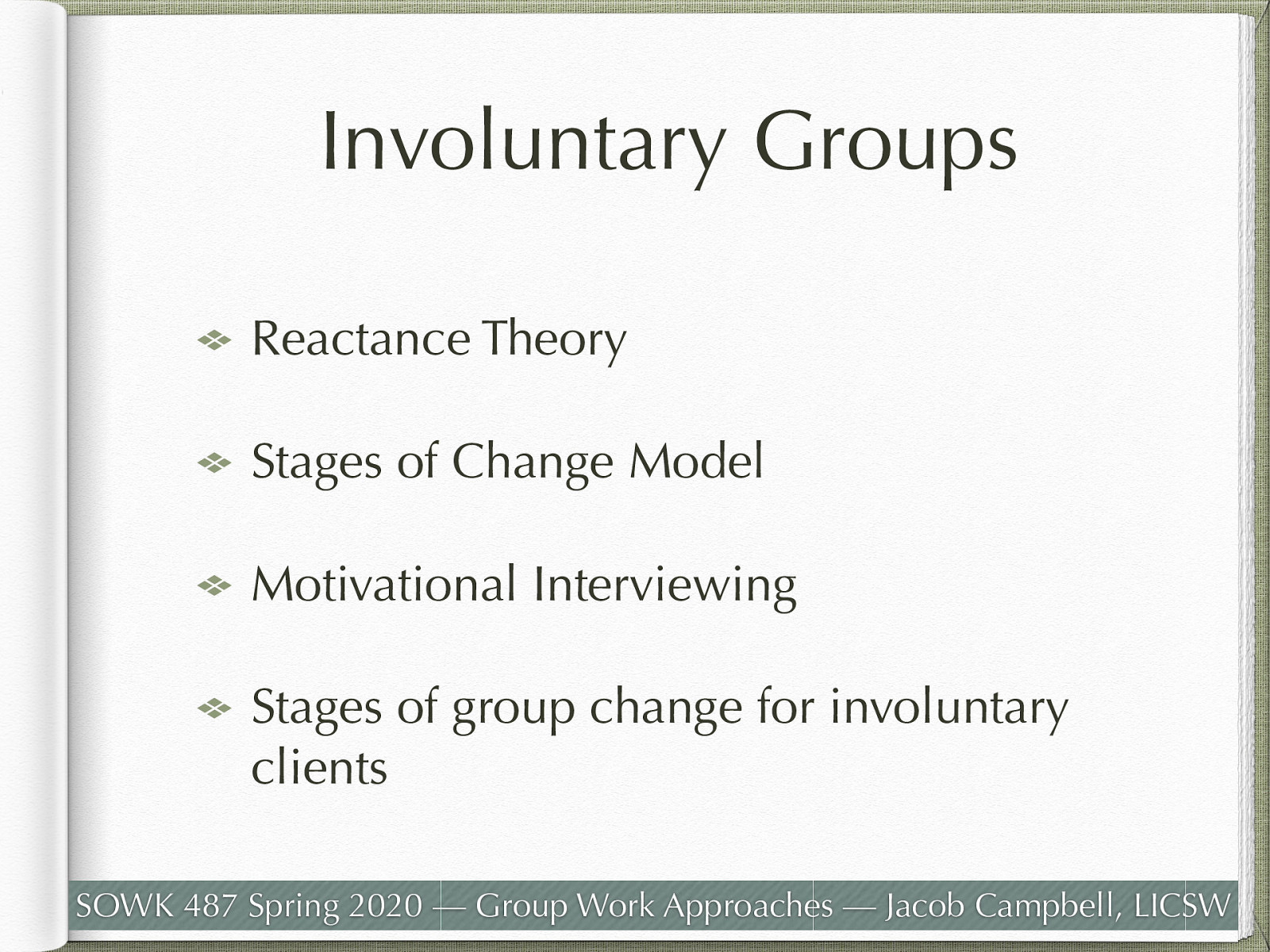
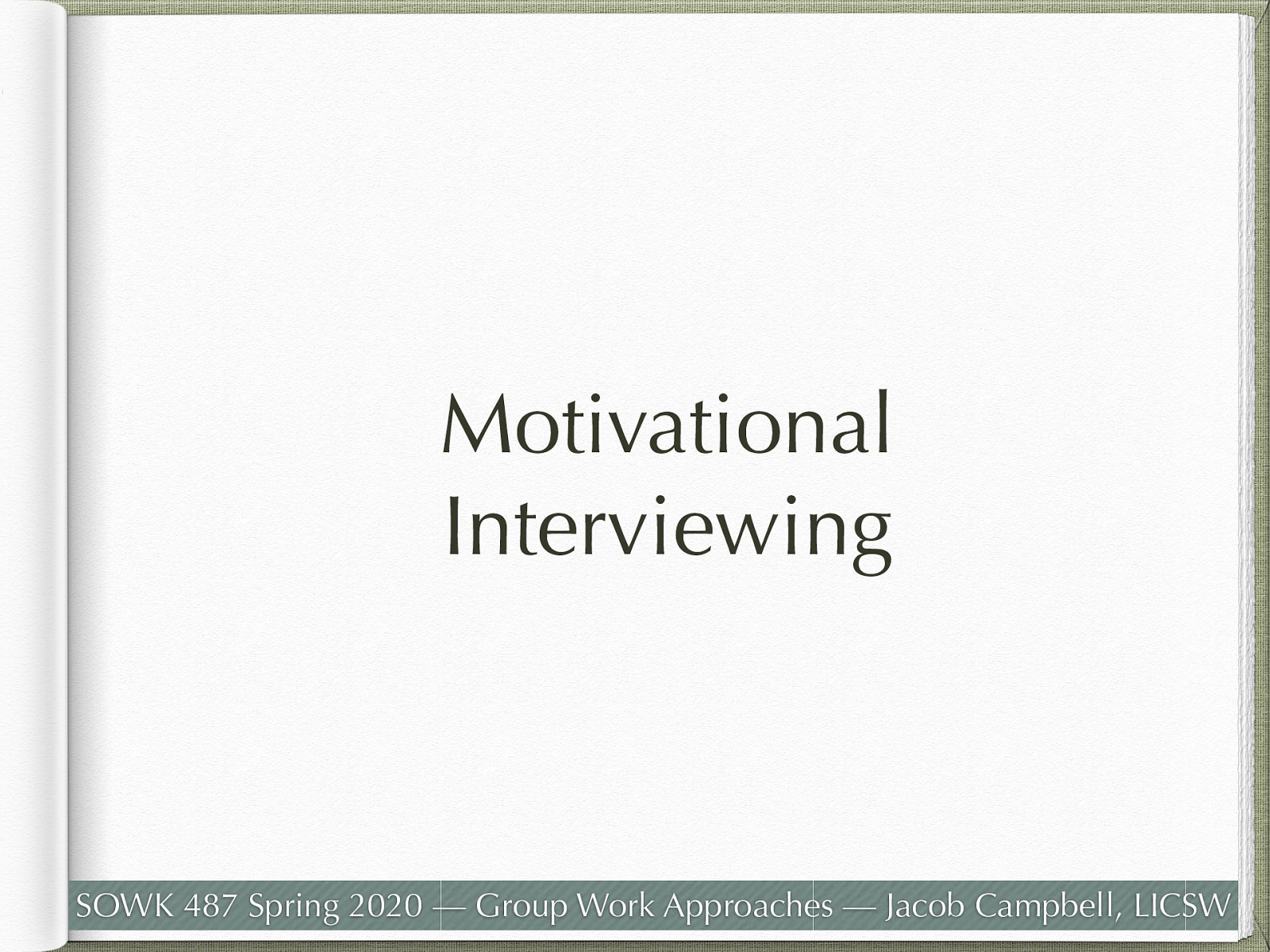
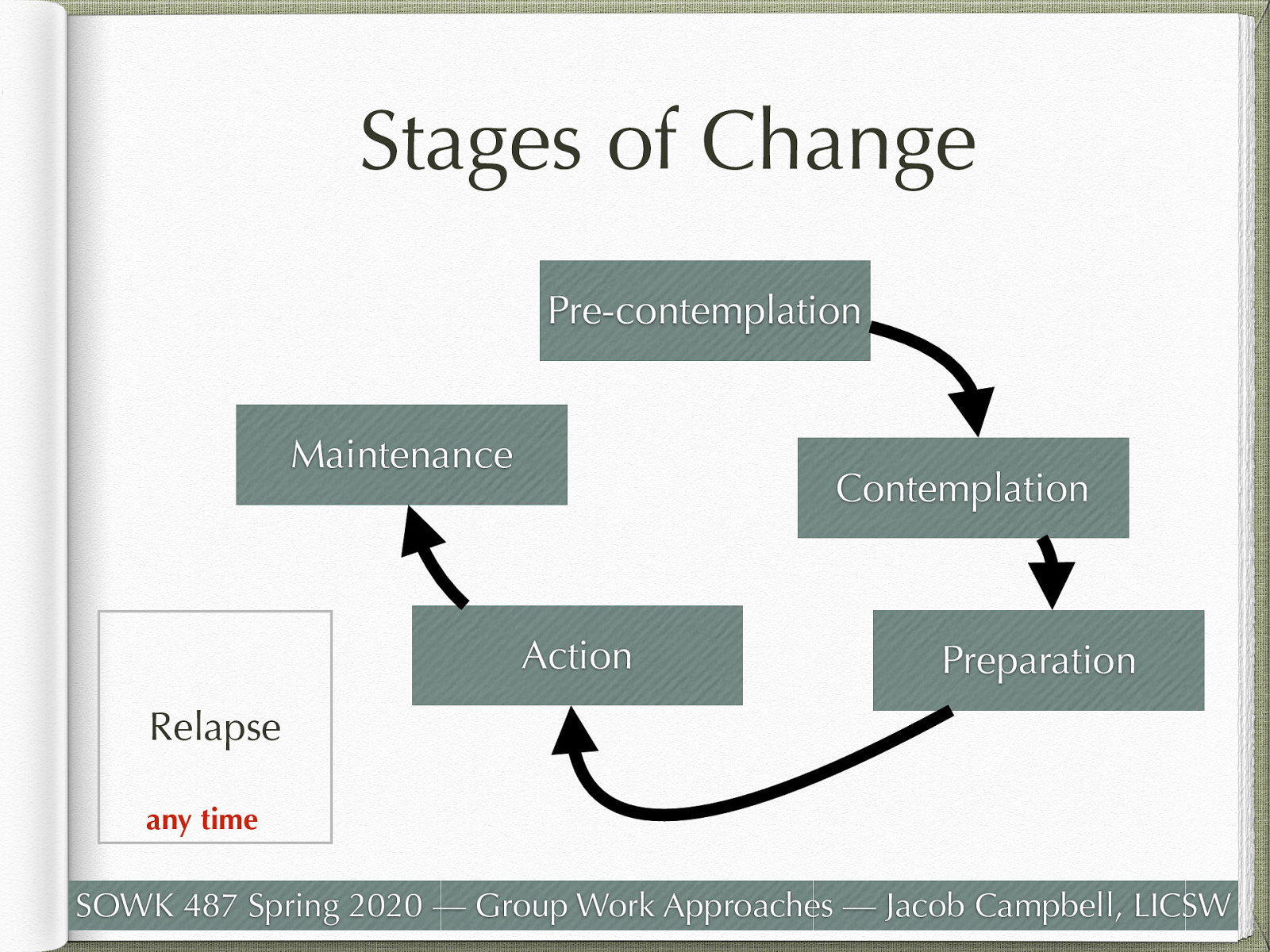
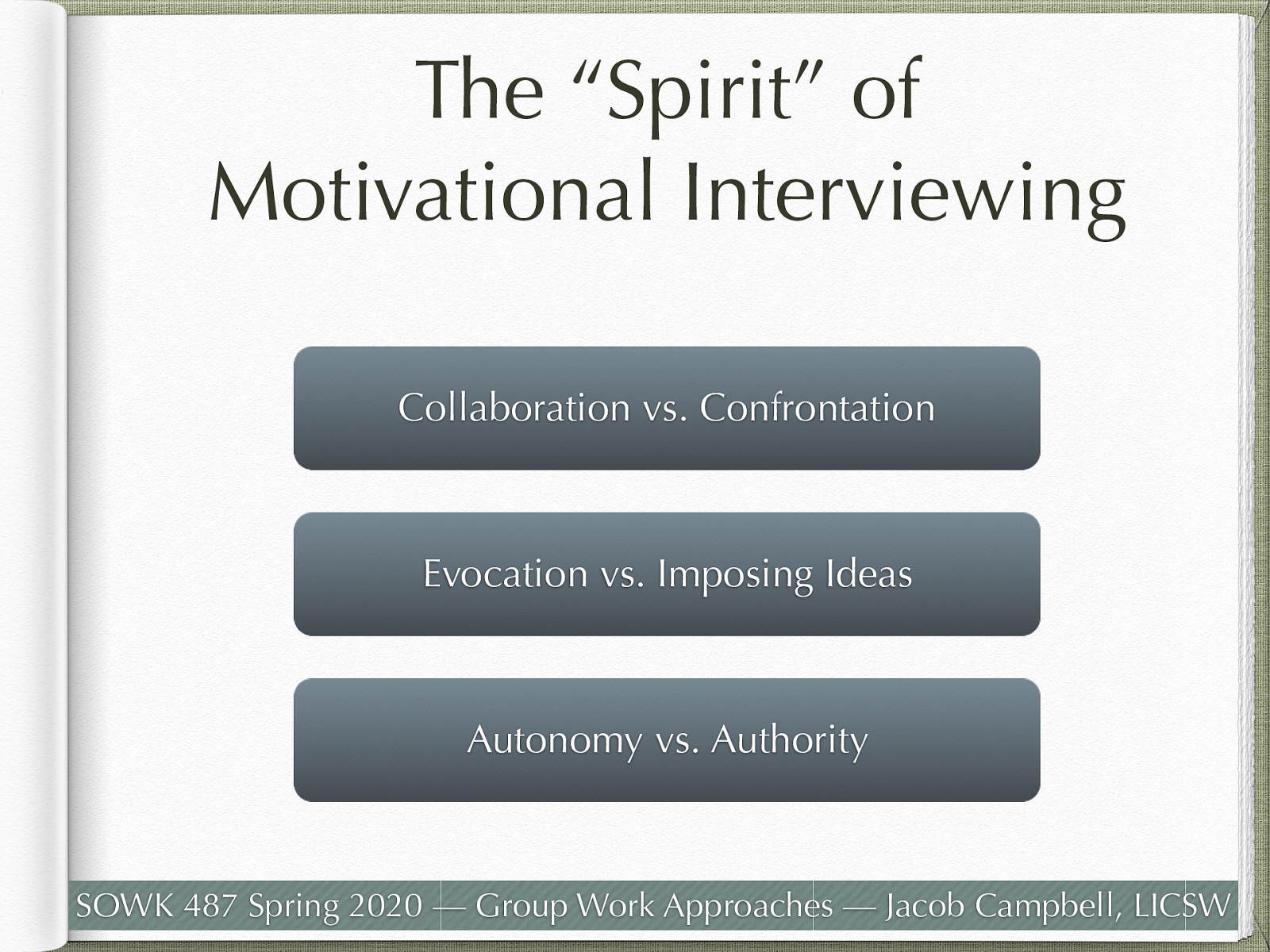
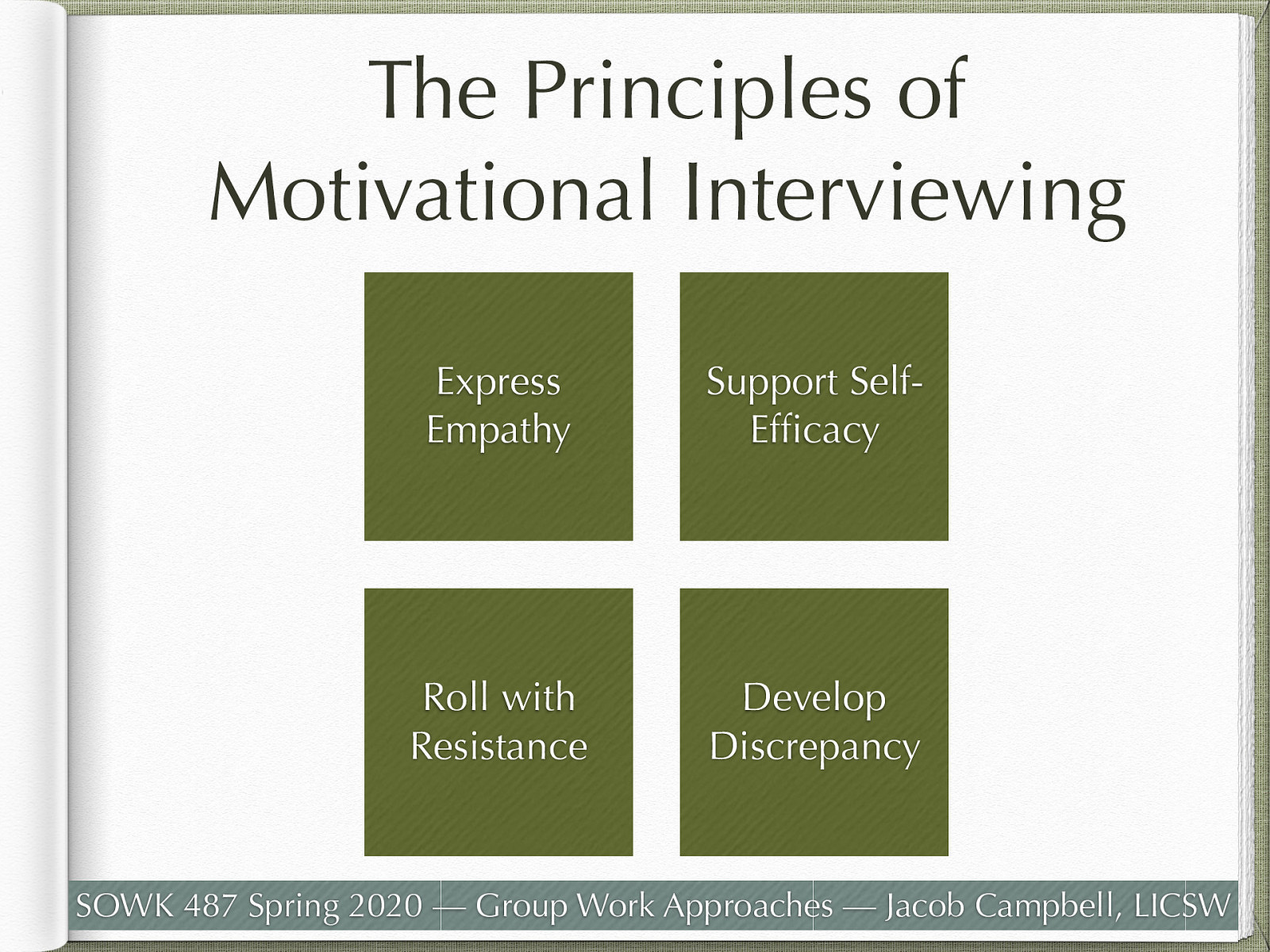
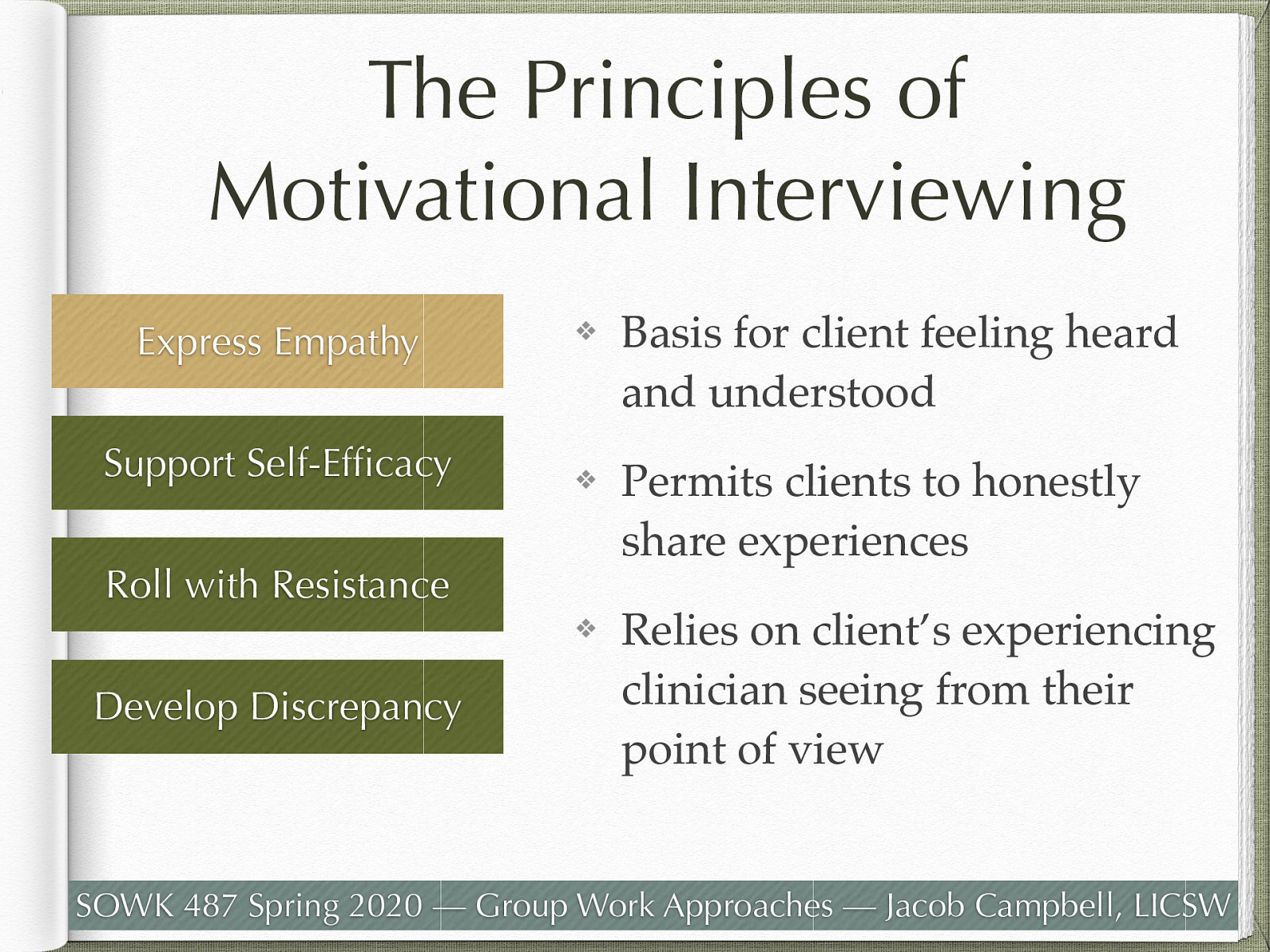
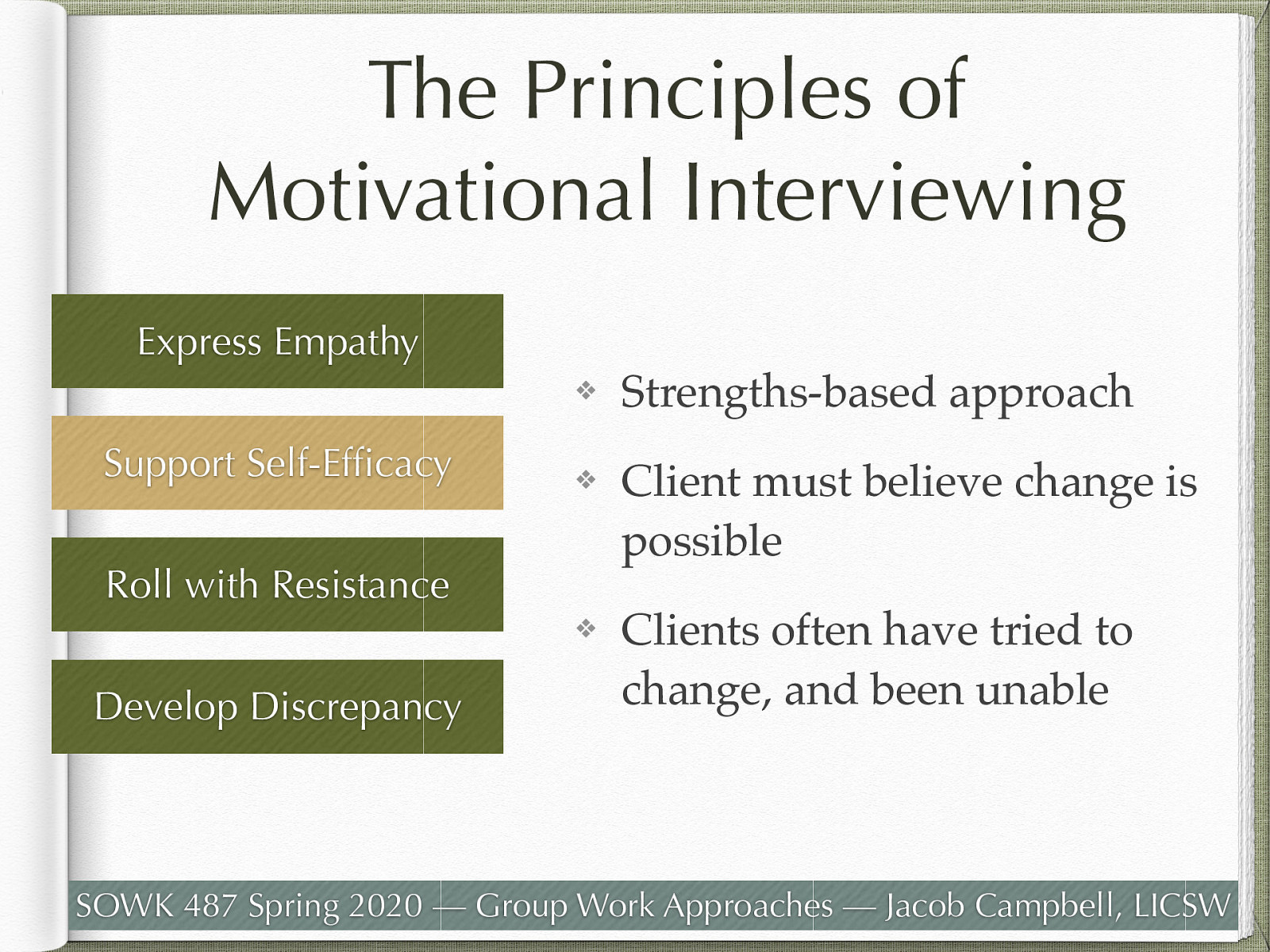
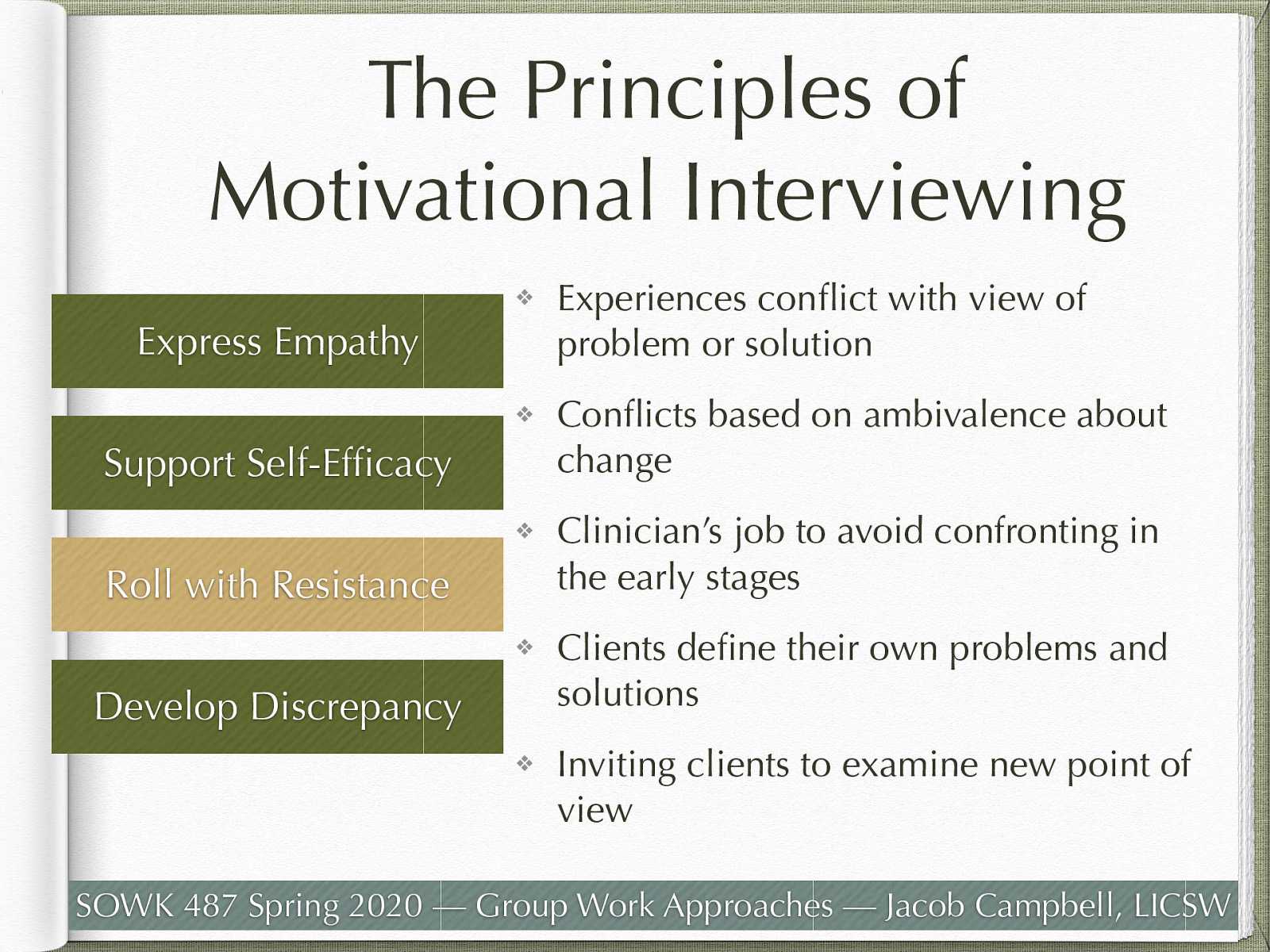
![Developing discrepancy guiding client to understand the mismatch between where the client wants to be and where they are. Motivation for change occurs when people perceive a mismatch between “where they are and where they want to be,” and a counselor practicing Motivational Interviewing works to develop this by helping clients examine the discrepancies between their current circumstances/behavior and their values and future goals. When clients recognize that their current behaviors place them in conflict with their values or interfere with accomplishment of self-identified goals, they are more likely to experience increased motivation to make important life changes. It is important that the counselor using MI does not use strategies to develop discrepancy at the expense of the other principles, yet gradually help clients to become aware of how current behaviors may lead them away from, rather than toward, their important goals. [Whole Class Activity] Have students work with partners regarding something that there has been some resistance to change. Work through some of the principles with your partner.](https://presentations.jacobrcampbell.com/WunDE9/deck-4926-large-12.jpeg)
![While ART’s moral reasoning day is different than a truly sophistry method discussed as a method for examining faculty beliefs, it fits in very well with working with involuntary clients. [Whole Class Activity] 10 volunteers (participants) 1 volunteer co-facilitator others observers. Facilitate moral reasoning day as listed below. Students do not need to necessarily take on a part, but answer honestly or they can act as a persona. Review Rules for Discussion (See page 111 of Aggression Replacement Training, Revised Edition) Introduce/Review Thinking Errors. (See pgs. 98 & 99) Have a group member read the Problem Situation aloud. Establish the “real” problem so that all group members clearly understand the problem. Relate the Problem Situation to the lives of the group members. Establish Moral Maturity through eliciting mature responses first, reconstructing less mature responses, and listing them on an ease pad, chalk board, or white board preferably on one side of a T-chart. List less morally mature responses second on the other side of the T-chart if they cannot be reconstructed to seem more mature. Provide no reinforcement for less mature reasoning. Encourage more mature group members and use the list of mature reasons on the chart to challenge the less mature reasoning of group members. Provide perspective taking opportunities by having youth who disagree examine each other’s reasoning for thinking errors. Provide role taking opportunities for group participants. (e.g. How would you feel if you were . . ? What would you do if you were …?) When possible seek to make more mature answers and reasons for those answers a group decision. Praise the group and individuals within the group for positive decisions and mature reasoning.](https://presentations.jacobrcampbell.com/WunDE9/deck-4926-large-13.jpeg)
